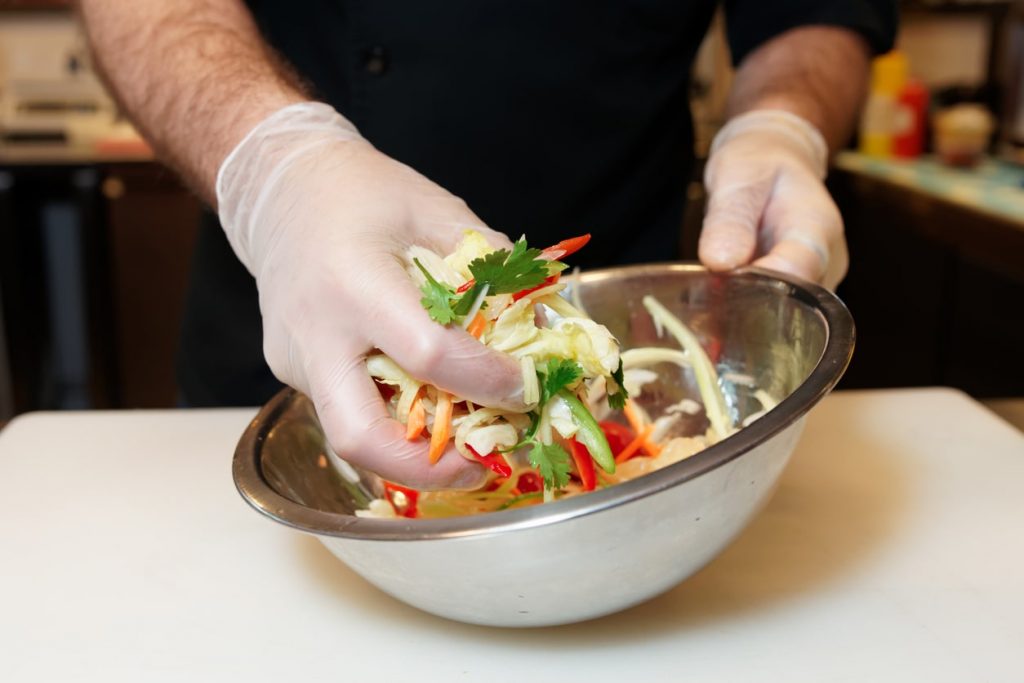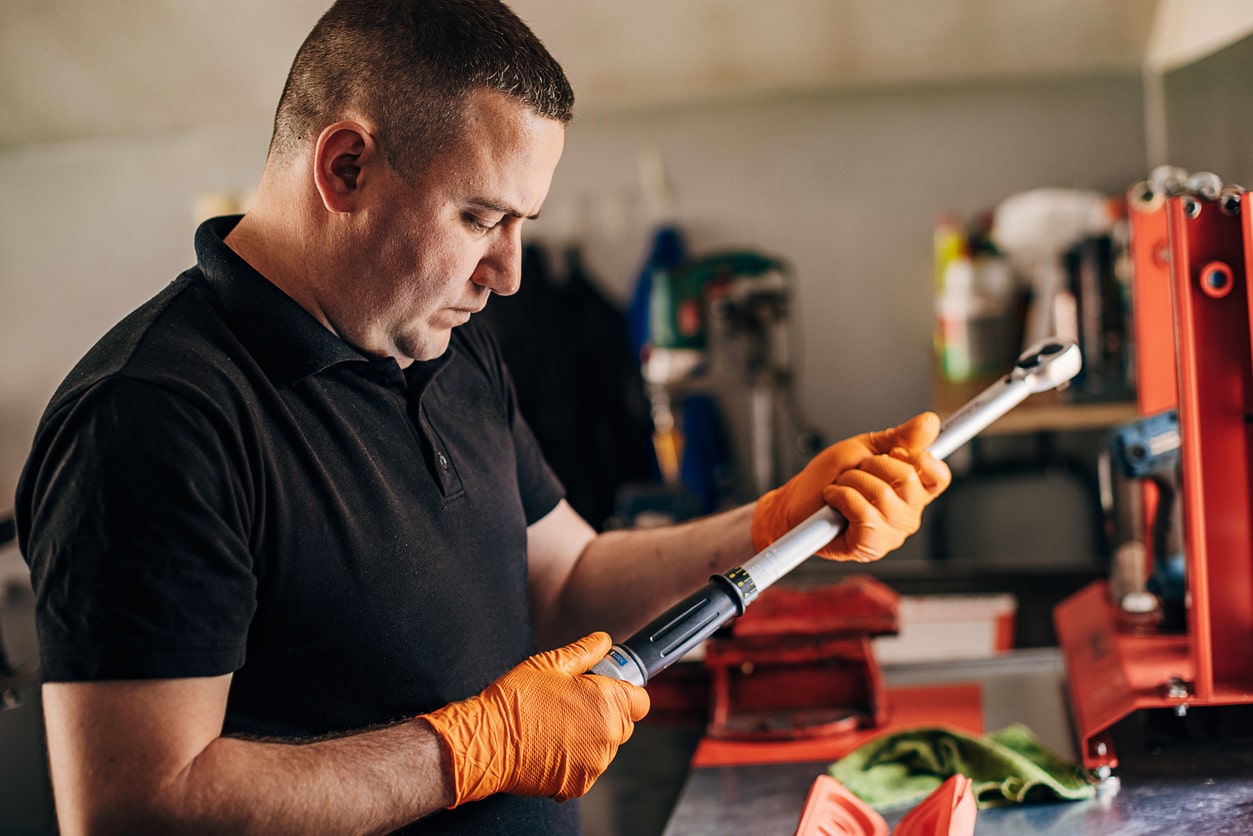Are you part of the foodservice industry? Or do you frequent hotels and restaurants?
Do you have to wear gloves while handling food?
Gloves have always been used in the foodservice industry, but now, there is increased attention on hygiene and safety with the pandemic.
The customers who come to your establishment are worried about the way food is handled.
Unfortunately, gloves can also provide a false sense of security for workers and customers.
The workers think they are wearing gloves for their safety, while customers feel happy and relieved seeing the workers wearing gloves.
However, this is a common misconception. The main reason why workers wear gloves while handling food is to avoid cross-contamination.
The protection and safety of the workers and the customers are obviously important too.
Are gloves essential in handling food?
This is the first question that may come to your mind. Are gloves really necessary?
The surface of our hands is covered with more than 2 million microorganisms (1).

Even after washing your hands, you may not be able to remove all of these.
- Gloves, especially disposable gloves, can help in avoiding the spread of foodborne diseases.
- Gloves help in minimizing contact with food. This helps in blocking the microorganisms that could cause illnesses.
- They protect customers from any bacteria or allergens that may be present on the employee’s skin
- By using different sets of gloves, workers can avoid cross-contamination. This is beneficial when handling raw meats and other produce.
- Gloves also protect the wearer from irritating foods such as peppers or food that can have a lingering smell, such as onions.
Disposable gloves are a part of the essentials in all commercial kitchens.
You can find them in a variety of colors and materials. Choosing the right kind of gloves is extremely important for safer food handling.
What are the FDA requirements?
The Food and Drug Administration (FDA) in the US requires employees to use gloves while handling any food ‘ready to eat.’
Under the FDA Title 21 CFR Part 177, the regulations for food gloves are laid out. It mentions that the approved gloves must be made from a ‘generally recognized as safe for use in food and food packaging.
Food-safe gloves can get FDA 510(k) certification to show their level of effectiveness.
What kind of food items should not be touched with bare hands?
The food service staff should be careful with certain food items and never use bare hands to handle them.
- Fresh fruits and vegetables served raw
- Salads and any ingredient in the salad
- Sandwiches and cold meats
- Any baked products like bread, toast, cookies, etc.
- Garnishes on food and beverages such as lemon wedges, lettuce, parsley, etc.
- Any mixed drinks or ice served to customers
Are there any food items that can be touched with bare hands?
Yes, it may surprise you, but sometimes it is ok to handle food with bare hands but only under specific conditions.
It is alright to touch food without gloves if it will be added as an ingredient to a dish containing meat that will be cooked at the required temperature.
Some authorities allow bare-handed contact with certain ready-to-eat foods.
What are food-grade gloves?
The foodservice industry should be careful about the gloves they use.
The workers handling any kind of food or utensils must wear the right types of gloves.
Food-grade gloves are made of materials that are considered safe for use with food and food packaging.
Many types of gloves can be food-grade gloves, but Nitrile gloves are great because they are strong and are free of additives & contaminants.
The various materials used in making food service gloves
Disposable gloves are used in many industries, but the food and beverage industry acquired greater importance.
To prevent the spread of germs and keep the food from getting contaminated, gloves are necessary as a barrier.
Not all food service gloves are the same.
They are made of different materials and may address the specific needs of restaurants, coffee shops, buffets, bars, etc. Some of the most commonly used food gloves are made of:
- Poly gloves: polyethylene gloves are pretty thin and meant for light-duty work. They are ideal for tasks such as tossing salads or stacking sandwiches. They are lightweight, loose, and breathable. Wearers can remove and replace them quite easily. These are perfect for jobs where the workers need to change the gloves often because they are economical.
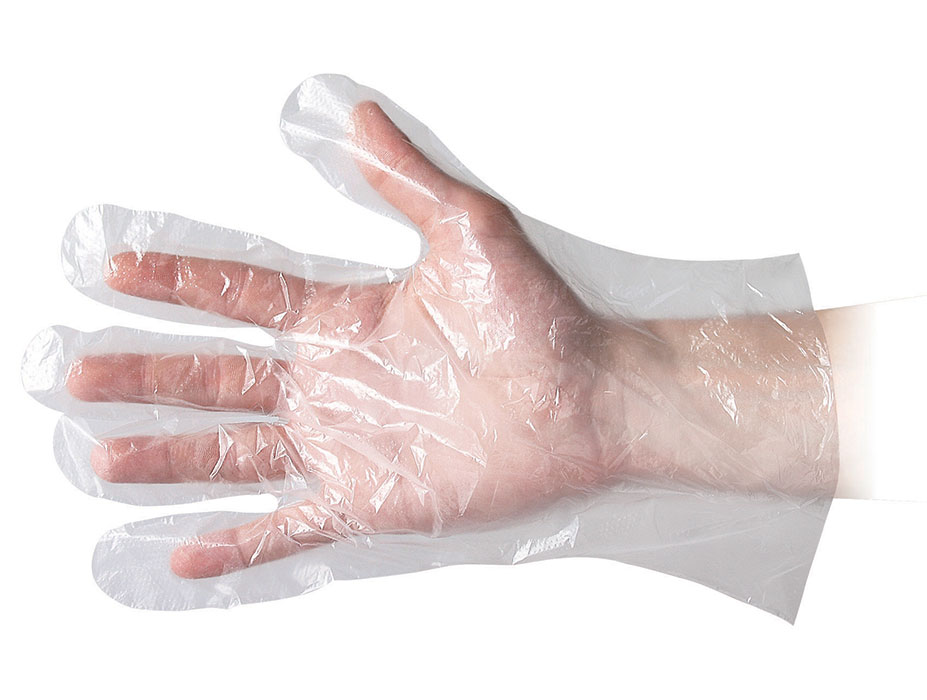
- Latex gloves: latex is a versatile material, and latex gloves are commonly used in the foodservice industry. They are high quality, durable, and strong enough to withstand heavier work. Some people may have a latex allergy, and they should avoid wearing these gloves.
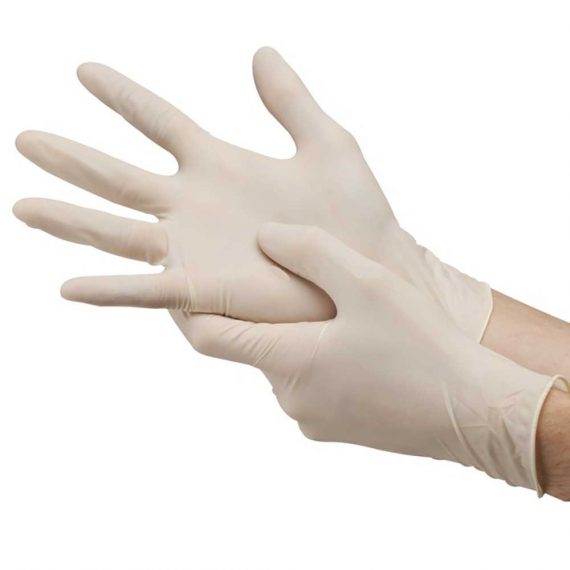
- Neoprene gloves: these are perfect for heavy-duty jobs such as dishwashing and wet handling. These are thick and can be reused a few times. They offer good protection against chemicals, acids, and other such harsh products.

- Vinyl gloves are suitable for food service as they are comfortable, safe, and don’t have any latex. They can be used for several tasks such as food prep, serving, cooking, and even some general janitorial duties. These gloves give a snug fit and can protect the wearer’s hands from sticky or messy stuff. For short-term uses, these are super comfortable.
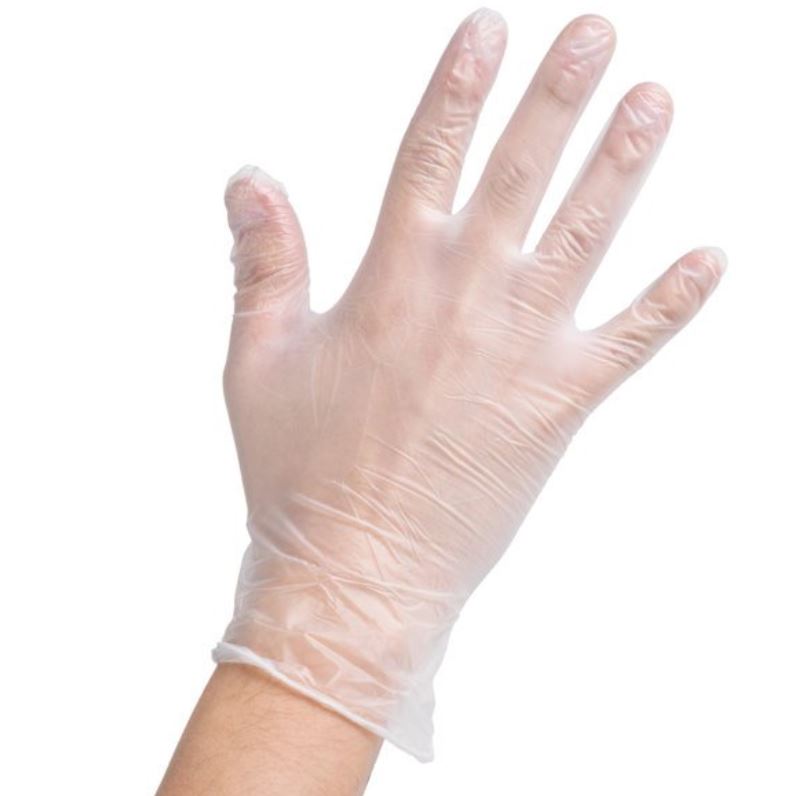
- Nitrile gloves: these gloves are the perfect choice for food service workers. You can get Nitrile gloves in various thicknesses ranging from 2 mm to 6mm and more. The thicker gloves are used for industrial uses and the thinner ones in the food and beverage industry. These are pretty strong and thin, making them ideal for intricate jobs with some risk. They offer great tactile sensitivity.
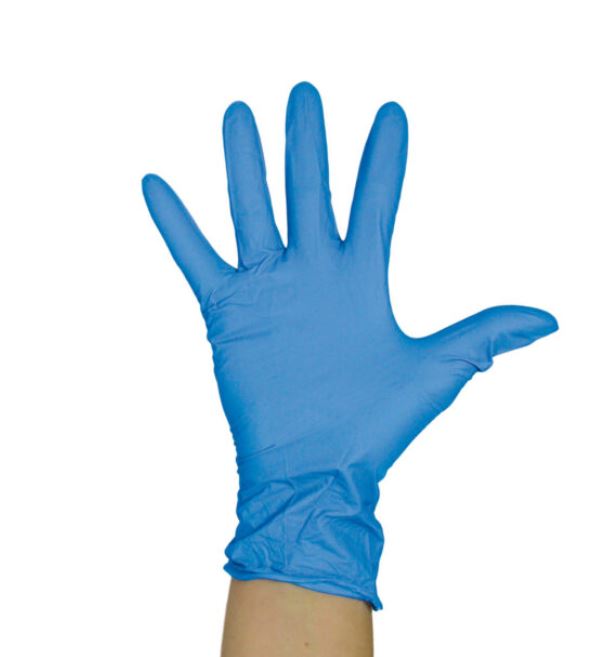
9 things to avoid when choosing food service gloves
When buying any safety product such as disposable gloves, you must take time to inspect for both functionality and quality.
The FDA has specific regulations that must be followed while choosing food service gloves.
Disposable gloves are sensitive to use. You should ascertain that the gloves you choose are tested and approved by the relevant authorities.
1- Avoid powdered gloves
Powder helps in reducing stickiness and friction. This makes it easy to put them on and take off.

They may also last longer, but you must avoid powdered gloves for food service.
Powdered gloves can leave a messy residue on the wearer’s hands.
When this residue or powder comes in contact with any food item, it can cause contamination.
Some cheap quality gloves use bad quality powder, which can cause severe allergies.
Some of the powdered gloves smell bad, too, which is again a problem when you are handling food.
One of the main reasons people buy powdered gloves is the ease of taking off and wearing them.
Now, many varieties of gloves without powder are available, which are easy to wear and take off.
2- Avoid cheap quality
When choosing a pair of disposable gloves, avoid looking only at a price.
Gloves made from cheap quality materials usually can cause skin problems apart from food contamination.
Many chemical accelerators and additives are used while making nitrile or latex gloves and can cause a lot of harm to the hands and wrists of the wearer.
The cheap and bad-quality gloves will also rip and break easily.
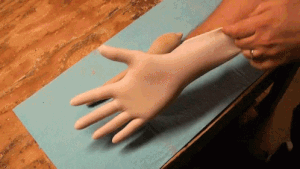
So, you will anyway end up buying more gloves and more frequently as well.
To reduce costs many manufacturers use phthalate plasticizers in vinyl gloves. They are extremely hazardous and may even cause cancer (2).
Moreover, the cheaper alternatives usually are manufactured with serious labor rights abuse in factories in developing countries (3).
Last but not least, when you buy cheap quality gloves, it is highly likely that for every box of a hundred gloves, you will find 5 to 10 less or a few defective pieces.
This is a usual practice to reduce costs, but it may turn out to be expensive for you.
3- Avoid latex allergy
Latex allergy occurs due to the reaction to the natural rubber latex.
Many products are made from natural rubber latex, including gloves. If an allergic person inhales latex particles or comes in physical contact, he may have an allergic reaction.

The reaction may range from slight to severe. The symptoms can be:
- Skin irritation: there can be itching, redness, swelling, etc., on the skin after it comes in contact with latex.
- Hives: welts appear on the skin along with severe itching. Painful swelling of the lips, inside the throat, and eyelids.
- Rashes: an itchy rash may spread from the area where latex comes in contact with other parts of the body. It may get severe, and if you cannot control the itchiness, you may scratch excessively and cause more problems.
- Runny nose: runny nose and uncontrollable sneezing, which can tire you out. Watery, red, and swollen eyes are common.
- Difficulty in breathing: this happens to people who have a severe allergic reaction to latex. If not treated in time, this could even be fatal. You should not take it lightly.
4- Check for suitability

Different types of food preparation and handling require different types of gloves. The main difference is between:
- Food Prep: gloves used while preparing different items and all related jobs. These are usually disposable and waterproof. They come in a wide variety.
- Food Service: gloves which the serving staff wears.
- Cloth gloves are generally white in color because they look dignified, and the gloves do not come in contact with the food.
- Barbeque gloves are usually black in color because the juices and gravy can stain the gloves. Black color can hide this from the guests.
Apart from these, it is essential to choose gloves according to their use.
- Bakery: you may have to handle both hot and cold products and use the oven. Poly gloves are the best option if you are going to change the gloves regularly. They are inexpensive, easy to wear, and take off.
Latex gloves can prevent burns and are best for loading and unloading ovens and moving hot food items such as cookies, pies, etc. However, they are more expensive than poly gloves and may cause allergies.
- Deli: in a deli, you need to change gloves quite often. Poly gloves are ideal for rolling out sandwiches, portioning meat and cheese. Synthetic poly gloves are a good alternative and have more sensitivity for more intricate work.
- Buffet line: buffet lines are susceptible to spreading diseases, and gloves are essential. They need gloves that provide touch sensitivity and allow them to grip food properly. Vinyl, nitrile, and poly gloves all work well, but latex gloves may be ideal if the wearer has to handle hot food.
- Industrial kitchen: working in an industrial kitchen means that you may perform some heavy-duty and high-risk tasks such as cutting meat or preparing vast batches of sauces. Nitrile gloves are form fitting and can prevent injuries. Textured latex gloves are ideal for jobs that require precision and flexibility.
5- Wrong size
It may seem like a minor problem if you are not wearing the right size of gloves. However, this may cause big problems. For specific tasks which require more touch sensitivity, it is essential to find perfectly fitting gloves.
- Too small: if the gloves are too small, they can decrease the blood flow to the fingertips. This can lead to pain and numbness. Small gloves can also make hand movements difficult and constrain the fingers.
- Too large: gloves that are too large can make the fingers and hand slide around inside the glove. You will experience reduced dexterity, and even performing simple tasks will be difficult.
6- Wrong material
The most important consideration while choosing food service gloves is the type of material used in the manufacture. Different materials have their pros & cons and their functional attributes. Disposable gloves are mainly made of:
- Latex
- Nitrile
- Vinyl
Of these, Nitrile gloves are most preferred because they are latex-free and quite strong.
Latex is perfect for a variety of tasks, but it may cause skin allergies to some users. Latex fits much better and is strong. Vinyl gloves are not as strong and durable as latex and nitrile, but they are cost-effective.
7- Avoid even a small defect
When buying food service gloves, users buy them in big batches.
To save money, some may go for the cheapest alternatives.
However, it is essential that you decide based on quality, especially for gloves used for handling food.
Look for the right brand to buy gloves. Quality is extremely important because even a small defect can cause huge problems.
You may end up spending much more if you are not careful about the quality of the gloves.
Sometimes, a small defect like a bad seam, uneven surface, excessive stickiness, etc., can indicate that the whole batch has defects.
8- Glove Thickness And Length
While choosing food service gloves, you must pay attention to the thickness and length so that they are suitable to your requirements.
You must be clear about how you are going to use the gloves to know the right dimensions.
Different materials will also make a difference in thickness.
Gloves should have the required thickness to resist cuts, abrasions, heat, chemicals, etc.
At the same time, they should allow you to work freely and not restrict movements.
Touch sensitivity is important for certain jobs. Thickness between 2 mm and 15 mm is ideal for food service gloves.
- Too thin: you may hurt your hands or fingers if the gloves are too thin. They may also tear or break easily.
- Too thick: extra thickness will cause restricted movement and discomfort to the wearer. It may even make the hands sweaty and cause infections.
The length of the gloves should depend on what the intended task is. If you intend to dip your hand in the water, chemicals, or even a sauce, then you need a longer length.
9- Not paying attention to the Service Grade
Choosing food service without paying attention to service grade can land you with unsuitable and unusable gloves.
The service grade of a glove indicates which type of work it is suitable for.
Gloves in the foodservice industry need to be graded for use in the food and beverage industry.
Don’t make the mistake of using medical grade or industrial grade gloves in the foodservice industry.
These grades are decided only after extensive testing and trials.
Disposable Gloves
Disposable gloves are also known as single-use gloves.
It means that a pair of gloves should only be used for a single activity and that too for a limited time.
Every time you move to a new activity, you must replace the gloves.
This is extremely important for you to get full protection.
When to change/dispose of the gloves?
You know that you need to change gloves when you change activities.
Does it mean that you keep wearing the same gloves throughout the day if you are carrying on the same activity?
There are many reasons for which you should change your gloves. If:
- Your glove is torn or damaged. Even if you notice a small tear, replace the gloves immediately.
- Your gloves are dirty or soiled, then change them before touching anything else.
- After touching raw meats, seafood, etc., you need to touch other food items and change your gloves.
- Your gloves have been contaminated either by your coughing and sneezing or because you wiped your nose, mouth, eyes, etc., with them on.
- Regardless of usage, you should use disposable gloves for not more than 4 hours. If possible, change them every 2 hours.
- You feel that you should change your gloves, then you must because even a small thing can cause a big problem.
Points to keep in mind while choosing disposable gloves for food service?
Disposable gloves are used in many industries for different types of work.
In the foodservice industry, disposable gloves are used regularly to prevent the spread of germs and contamination.
However, sometimes the workers don’t realize that certain gloves are more suited to their specific line of work than others.
Here are a few pointers which can help you make a good decision while getting food service gloves.
Uses of food service gloves in the kitchen
most commonly disposable gloves are used to protect from foodborne illnesses.
People can get sick from contaminated food which is caused by such illnesses.
Disposable gloves can prevent the spread of bacteria and protect your hands from spicy vegetables and food, especially when you have any cuts on your hands.
Gloves protect your nails as well from unwanted colors and injuries. Strong odors of foods such as garlic or fish can last for a long time on your hands. Wearing gloves can keep your hands smelling fresh.
What do you look for in food service gloves?
Food service gloves are meant for short-term use and need to be changed frequently. Affordability and quality are both important.
Some food service gloves have an antimicrobial agent that can prevent microorganisms’ growth; you can choose the right gloves depending on the type of work.
The material of the gloves is also extremely important. Different materials have their pros and cons and you should select gloves only after understanding your needs.
Buying in bulk
disposable or single-use gloves are often used when it comes to food service tasks.
Restaurants and eating places may go through hundreds or more of these gloves. It makes sense to buy the gloves in bulk.
- You will always have enough on hand
- You will be able to reduce business costs
- With enough gloves, you will not be putting customers or workers at risk.
Nitrile Gloves Are The Best For Food Service
Nitrile gloves are probably the best type of gloves for food service activities. When you choose gloves for food handling, you need to make sure that:
- Food is protected from the wearer’s hands and
- The gloves themselves don’t contaminate the food items.
Nitrile gloves are great on both these fronts. They are quite strong and completely allergy-safe.
They are available in a variety of sizes and colors to suit all types of requirements.
Importance of washing hands
Many people think that there is no need to wash your hands once you put on the gloves.
This is a common misconception.
The best practice to follow is to wash hands before wearing gloves and after taking them off.
Ideally, you must wash your hands every time you replace or put on new gloves.
If you want to reduce the risk of contamination, then you must wash your hands more often.
It is a good idea to keep the gloves near a hand washing unit to reinforce this idea.
It is also extremely important to dry your hands completely before wearing fresh gloves.
Even slight wetness can cause infections and a bad smell.
Remember that gloves are not magical! They cannot kill viruses or bacteria. Gloves help in minimizing the risk of spreading harmful germs.
It has been seen that almost 50% of the time, wearers don’t even notice any tears or damage to the gloves and continue to work.
This is why it is extremely important to start with clean hands and maintain high standards of hygiene.
Why don’t Chefs on TV wash their hands?
You may not see them washing their hands, or it may not be aired live on TV, but chefs do wash their hands.
They have a limited amount of time, and they have to show several other important things.
This is the reason you don’t see chefs on TV washing hands.
What happens when you touch money or phone?
Not surprisingly, both phones and money are big spreaders of harmful germs.
They are handled by multiple people and are always risky. Paper money and coins can retain infectious germs on the surface for a long time.
When we talk about phones, we talk about phones in public places such as restaurants and bars.
Many people generally use these phones, and the user holds the receiver quite close to his face and mouth.
It may not be required legally, but it is a good practice to wash your hands and wear fresh gloves when handling food and money or phone.
Latex Ban
There have been some problems with latex gloves.
People who have an allergy to latex can have severe reactions, even with slight contact with the food.
Many states in the USA have banned latex from the food service industry.
Several states are considering a ban, and it is necessary to find suitable alternatives to latex in the food service industry. Some pros and cons of latex are:
Pros:
- It is a natural and biodegradable material
- Highly elastic
- Strong and durable material
- Fits snugly
- Has good touch sensitivity
Cons:
- May cause allergic reactions
- They are slightly expensive than vinyl gloves
How do you evaluate the food service gloves?
Every time you purchase something, it is excellent to know that many tests for quality and safety were carried out before it reached you.
The FDA sets high standards for the quality of gloves that can be sold in the market.
The glove manufacturers have to follow strict quality control measures to get approval from the FDA.
As customers, it is easy to check the quality by looking at the pack of gloves.
AQL or the Acceptable Quality Level is mentioned in the box. It is given as a percentage. The lower the percentage, the better quality of the gloves you purchase.
If the AQL is shown as 3.5, it means that out of every 100 gloves, 3.5 will fail the quality test.
While there are several tests for checking the quality, one very common test is the ‘watertight’ test.
This test can check the gloves for pinholes which can lower the quality of gloves.
The gloves are filled with room temperature water and hung for about two minutes to carry out this test.
If no water passes and there is no leakage, then the glove passes the test.
Conclusion
The bottom line on food service gloves is that they can be highly effective in preventing the spread of harmful germs, but only if used appropriately.
Gloves are not a substitute for best practices when it comes to food handling.
The staff and workers need to know how to use the gloves.
Whether you work in the foodservice sector or you are cooking for your family, it is recommended that you take safety seriously.
By using gloves, you can ensure better hygiene and prevent the spread of contaminants. Here are a few things to keep in mind when using gloves in the food service industry.
- Choose the glove which is suitable for the task at hand. Every type of glove has some advantages and disadvantages. Your selection must reflect your needs.
- Gloves can also pick up germs, just like our hands. Wearing gloves does not mean that you are entirely safe. It is still important to avoid touching your face and other things just like you would when not wearing any gloves.
- Even if you are not allergic to latex, it is best to avoid latex gloves. They may seem durable and comfortable, but they are already banned in many states. This is due to the potential allergic reactions they can cause in latex-sensitive people.
- It is extremely important to wear and take off gloves in the proper way. By not following the right steps, you can easily cause cross-contamination.
- Don’t wear the same gloves for too long. Change the gloves if:
- Your gloved hand has come in contact with anything other than food such as money, phone, co-workers, etc.
- More than 20 minutes have passed in a busy food service place. This can reduce the risks of cross-contamination.
- Even if you notice a small tear or rip in the gloves.
- You are handling a different type of food
- There is food residue on the gloves
Gloving is one of the most critical factors in maintaining food safety in the food service industry. You can handle food service in the best way with the right protection.

